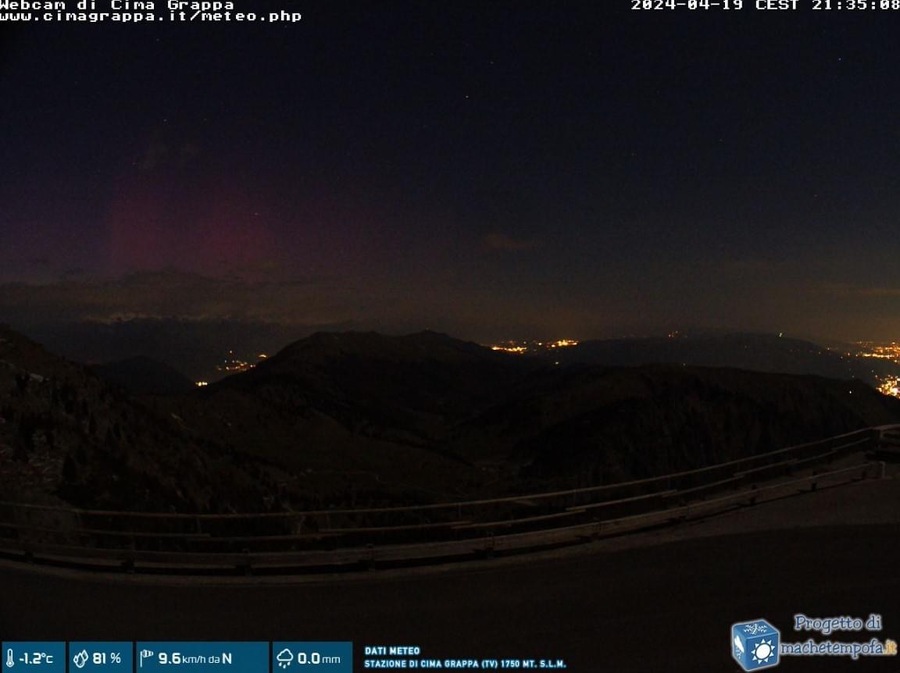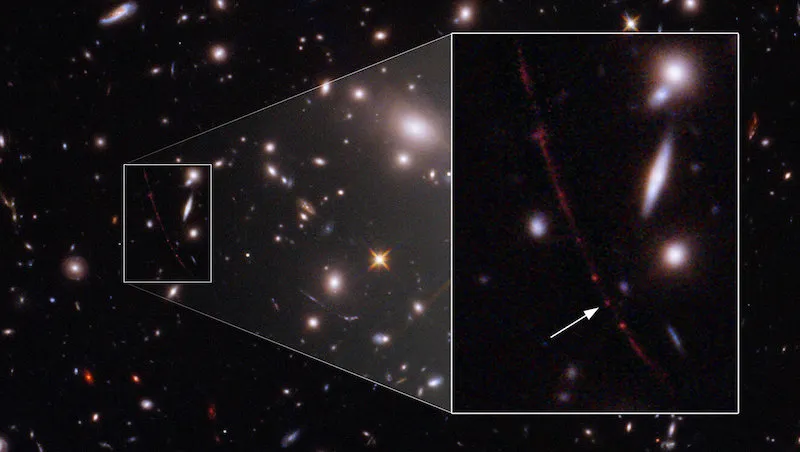The Hubble Space Telescope has spotted the farthest star ever seen in the universe, approximately 13 billion light-years away from us. Because it is so far away, its light takes a long time to reach us and this allows us to observe what the star looked like when the universe was only 900 million years old. The discovery was received by astronomers with great interest, but further verification will be needed to confirm the observation.
The star was called “Earendel”, which in Old English means “morning star” specified While Hubble was pointing toward the galaxy cluster WHL 0137-08, it can be observed in the sky in the constellation Pisces. A cluster can contain tens to thousands of galaxies depending on the situation, and this specifically has an estimated mass such that it could contain a thousand galaxies like our Milky Way.
WHL 0137-08 is located about 5.5 billion light-years from Earth, just over a third of the distance from the visible universe, so there are many objects behind it including a huge amount of other galaxies far away. The problem is that the further you advance, the more faint the light emitted by these orbs becomes, and the more difficult it is to observe.
Fortunately, a certain gravitational effect can help us observe very distant objects, thanks to the distortion of the path that light follows. This phenomenon makes it possible to obtain a kind of cosmic magnifying glass, which is not surprisingly called a “gravitational lens” by astronomers.
gravity lens
Gravitational lensing occurs when light emissions from a single star or an entire galaxy find a large amount of matter (such as a group of galaxies) on its way before it reaches the observer, who is on the same line of sight.
This phenomenon can have very different causes and physically different scales, but with some licence, it can be compared to what we see when we observe a light bulb shining through the base of a glass beaker. Sometimes, after taking the last sip by tilting the glass a lot towards the light source, this is seen to distort forming a ring between the outside of the base of the glass and the center (where the stem ends). Depending on how the base is tilted, we can notice different types of effects, such as arcs that distort and multiply the light from the lamp.
The video below helps you get a better idea, as it shows how light distortion occurs through the base of the glass.
Something similar happens in cosmic dimensions. Thanks to the gravitational field, the group of galaxies (corresponding in our example to the base of the cup) behaves as a target: it bends the path of light and amplifies its intensity. In the case of favorable alignment, the magnification can be such as to allow observations of celestial objects that are too far away and not too bright that can be seen with ordinary telescope optics.
Earndel’s position with respect to gravitational lensing effects (dashed line); Also visible is a group of stars reflected from the magnification line of the lens (NASA and ESA)
Using this system and exploiting Hubble, astronomers have been able to detect the existence beyond a galaxy cluster (now called WHL 0137-zD1) by identifying what appears to be a single object in the arc of light produced by a gravitational lensing. Star. Single: Earndell, actually.
erendell
It is very rare to get such results and such great distances can be covered. The light from the new galaxy took 12.9 billion years to reach us, and the age of the universe is estimated at 13.8 billion years. This means that we were able to observe what the galaxy looked like when the universe was only 900 million years old (“barely” in astronomical terms, of course).
Light is amplified in various ways by a gravitational lens and it is not always easy to determine whether the observed source consists of a single star or a group of stars. The research team that Earendel found estimated that the apparent increase in brightness could be between 1,400 and 8,400 times the actual light output, which explains why the Hubble Telescope and its sensors are seeing such a distant object.
In their study, the authors of the discovery they write That on the basis of color and luminosity, it can be assumed that the Earendel mass is 50 times the mass of our Sun, and therefore emits up to 100,000 times the light that our star does. The research team also wrote that they are absolutely certain that it is a single star, but admit that at such a large distance a group of multiple stars can be confused with a single star. Given the estimated size of the light source, it seems unlikely that it was a group of stars. Even if it were a small group of stars, something would still be observed 13 billion light-years away from us.
The clearest data about Earendel and its surroundings in the next few years may come from James Webb Space Telescope (JWST), which was recently launched into orbit and is capable of making observations with a higher resolution than Hubble. Earndel could help us understand more about the early days of the universe, when the first generations of stars began to form, with features that could help us better understand how everything else, including the solar system, formed.

“Incurable internet trailblazer. Troublemaker. Explorer. Professional pop culture nerd.”







More Stories
PS5: Seven best-selling Xbox Game Studios games
Dragon's Dogma 2: A big update is coming, but not for performance
Goodbye to expensive makeup products: here's how to get them for free, starting today you won't pay for them anymore